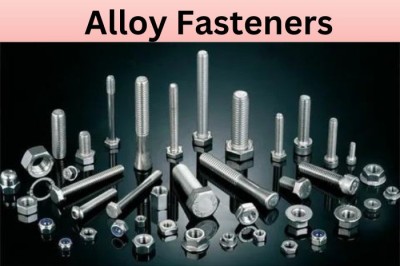What are the alloy fasteners and why they are used?
Alloy fasteners are metal fasteners made from an alloy of two or more metals, usually aluminium and steel. They are used in various applications due to their strength, durability, corrosion resistance and lightweight properties. Alloy fasteners can withstand high temperatures and have good electrical and high thermal conductivity, making them ideal for use in construction, automotive manufacturing and plumbing systems. Additionally, alloy fasteners are very cost-effective when compared to other types of fasteners so that they can be used in a wide range of projects and applications.
Understanding Heat Treatments for Alloy Fasteners
Heating metal involves various processes that can produce multiple material properties, from stress removal and softening of the metal through alteration in mechanical properties and grain structure refinement to creating specific microstructures.
Annealing is a process used to soften metal by altering its microstructure. It is typically performed on raw metals such as wire and rod at temperatures 19-38degC (50-100degF) above the upper critical temperature of steel.
Annealing
Annealing involves heating metals to an appropriate temperature and gradually cooling them back down over time, typically to increase their ductility or decrease hardness. It can often be used as part of an overall strategy to increase flexibility or decrease hardness.
Annealing is most often done to steel, though brass, copper, and silver also benefit from it. Materials are heated to their respective temperatures before being rapidly cooled with air or water cooling systems.
Solution annealing is another popular annealing technique that involves heating the steel to temperatures within the pearlite range and then switching back into austenitizing. Finally, after cooling back to room temperature, solution annealed steel can be returned back into service.
Annealing is an essential process in many manufacturing processes, reducing material hardness after cold working to help avoid cracking when shaping or forming them, such as through drawing or bending. Annealing also removes stresses caused by solidified welds. Although steel typically benefits most from this method, other metals such as aluminium, copper and brass could benefit too.
Tempering
Tempering is a heat treatment process used to enhance the properties of iron-based alloys, including hardness, strength and toughness.
Tempering is designed to achieve equilibrium between the hardness and toughness properties of metals, creating the optimal combination of mechanical properties that leads to solid and resilient fasteners with superior strength.
Under this process, metal is heated beyond its critical temperature before cooling slowly at an uncontrollable rate to increase toughness without compromising hardness or flexibility. This method enhances toughness without diminishing either hardness or flexibility.
Submarining carbon steel is a widely utilized technique to enhance its durability and strength, enabling it to withstand more wear and tear while remaining more ductile than fully hardened versions of its kind. Furthermore, submarining helps minimize breakage risk from fatigue stress failure over time, extending product lifespan significantly.
Carbide Solution Treatment
Carbide solution treatment, commonly referred to by its acronym (CST), is used on stainless steel fasteners and bars to increase their corrosion resistance. Although typically applied to AISI 304 materials, CST may also be utilized on 17-4 and Inconels alloys without risk of sensitization.
Heat treatment of austenite dissolving completely or substantially into carbon is accomplished by heating it to high temperatures and quickly cooling it afterwards.
Temperature increases carbon solubility, increasing its hardening potential and creating stronger hard materials; however, this process may reduce strength as well as toughness under high-temperature or pressure conditions.
One key advantage of this process is its ability to promote the formation of finely dispersed carbides within austenite matrix material - something crucial in protecting against intergranular corrosion.
Cold Working
Cold Working is an efficient method for strengthening and smoothing metals. Additionally, this process can be utilized to craft various metal products, including fasteners, pipes and tubes.
Cold working is an environmentally friendly, less costly alternative to other metallurgical processes like annealing and tempering. Instead of heating metal with hot pits and furnaces, cold working involves using room temperatures or lower to work on it - this makes it much less energy intensive and costly.
It requires fewer tools, generates minimal waste, and can be performed on various alloys.
Cold working techniques include bending and rolling. Bending involves altering the geometry of metal by deforming it over a work axis; it can be used to produce steel sheets, strips and bars. Roll forming involves rolling rollers to reshape it further. Swaging is another form of cold working used to reduce the diameter or taper of rods/tubes/wires/bolts as well as shaping ends or wires and bolts.





Comments